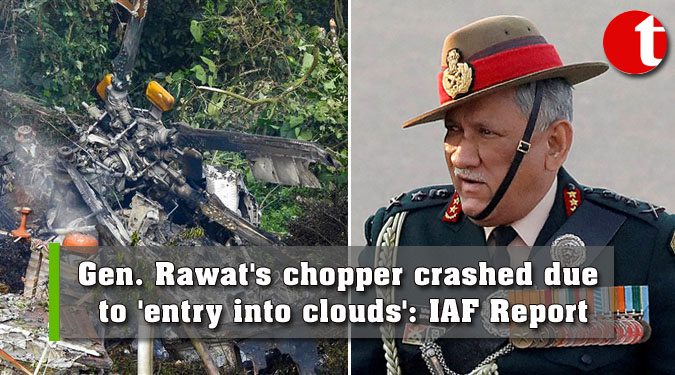TIL Desk/National/New Delhi/ The Indian Air Force chopper crash on December 8 that killed Chief of Defence Staff (CDS) General Bipin Rawat and 13 others was the result of ‘entry into clouds’ due to an unexpected change in weather that led to spatial disorientation of the pilot, according to the preliminary findings submitted by the tri-services court of inquiry.
A statement by the Indian Air Force (IAF) on Friday said the court of inquiry into the Mi-17 V5 accident has ruled out mechanical failure, sabotage or negligence as the cause. ‘The accident was a result of entry into clouds due to unexpected change in weather conditions in the valley.
This led to spatial disorientation of the pilot resulting in Controlled Flight into Terrain (CFIT),’ it stated. Gen Rawat, his wife Madhulika, his defence advisor Brigadier L S Lidder, staff officer to the Chief of Defence Staff, Lieutenant Colonel Harjinder Singh and decorated pilot Group Captain Varun Singh were among 13 others killed in the crash near Coonoor in Tamil Nadu.
According to United States aviation regulator FAA, CFIT is defined as an unintentional collision with terrain — the ground, a mountain, a body of water, or an obstacle — while an aircraft is under positive control. The IAF said that the inquiry team analysed flight data recorder and cockpit voice recorder besides questioning all available witnesses to determine the most probable cause of the accident. ‘Based on its (preliminary) findings, the court of inquiry has made certain recommendations which are being reviewed,’ the IAF mentioned.



